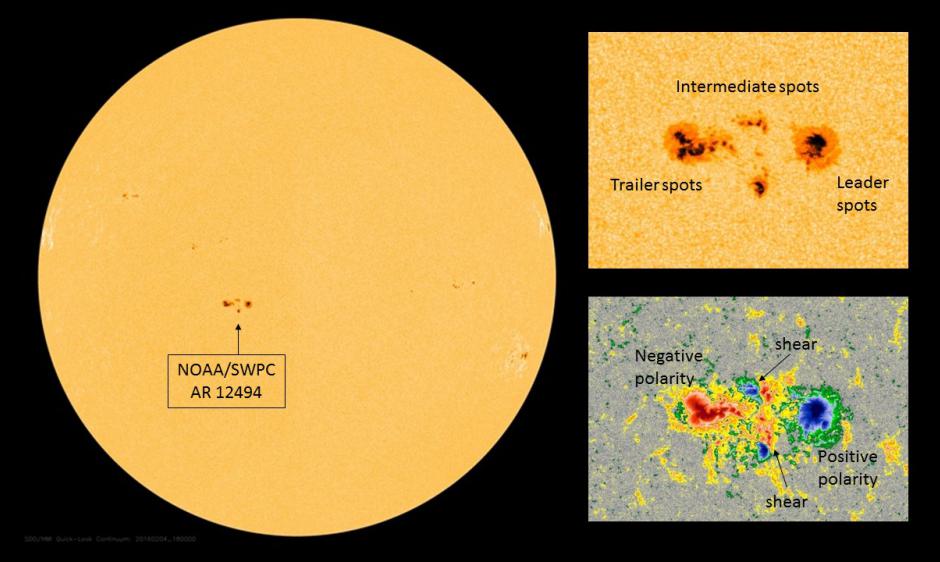
NOAA SWPC AR 12494 grew from a nearly spotless active region less than 24 hours ago into this increasingly complex spot group. It is now classified as a Dai, beta-gamma-delta spot group. This classification means it has mature penumbra surrounding umbra in both the leading and trailing spots. It also developed mature penumbra spots in between the leader and trailer. The northern intermediate spot developed opposite polarity umbra within the same penumbra; while the southern intermediate spots have opposite polarity, but separate, spots. This mixed polarity field is indicative of moderate to strong magnetic shear and a more likely chance of producing flares. Therefore, SWPC forecasters have upgraded the flare probability forecasts to 90% for C-class activity with a slight chance (20%) for M-class (R1-R2, Minor-Major radio blackouts) activity over the next three days (05-07 Feb). This region has already been the source for several C-class flares this 4 Feb UTC day, the most intense thus far was a C5 at 1822 UTC (2322 ET). Keep checking our SWPC webpage for the latest forecasts and analysis.